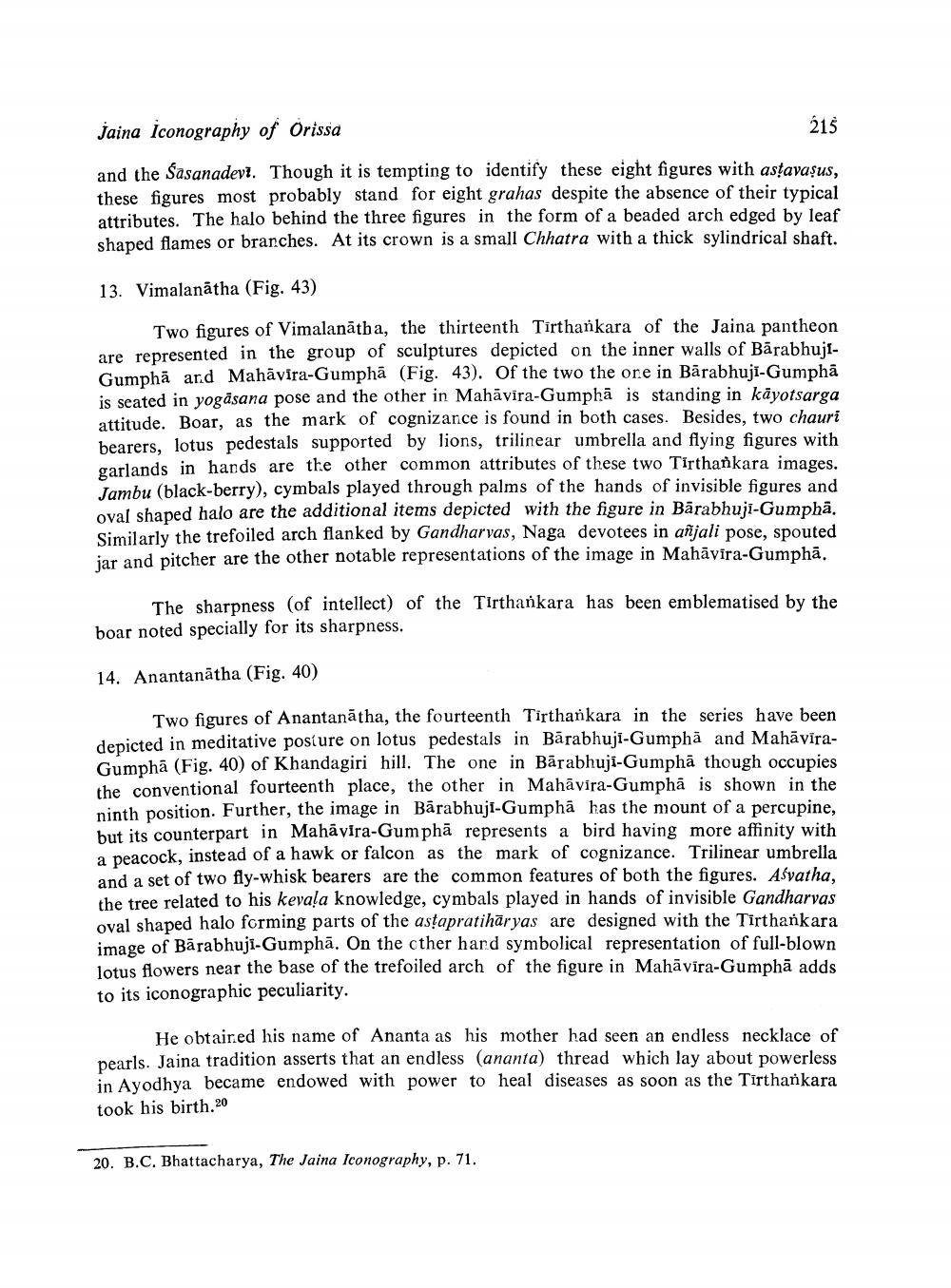________________
Jaina Iconography of Orissa
215
and the Sasanadevt. Though it is tempting to identify these eight figures with astavatus, these figures most probably stand for eight grahas despite the absence of their typical attributes. The halo behind the three figures in the form of a beaded arch edged by leaf shaped flames or branches. At its crown is a small Chhatra with a thick sylindrical shaft.
13. Vimalanatha (Fig. 43)
Two figures of Vimalanatha, the thirteenth Tirthankara of the Jaina pantheon are represented in the group of sculptures depicted on the inner walls of BarabhujiGumpha and Mahavira-Gumphã (Fig. 43). Of the two the one in Barabhujt-Gumphå is seated in yogasana pose and the other in Mahavira-Gumphã is standing in kayotsarga attitude. Boar, as the mark of cognizance is found in both cases. Besides, two chaurl bearers, lotus pedestals supported by lions, trilinear umbrella and flying figures with garlands in hands are the other common attributes of these two Tirthankara images. Jambu (black-berry), cymbals played through palms of the hands of invisible figures and oval shaped halo are the additional items depicted with the figure in Bārabhuji-Gumphā, Similarly the trefoiled arch flanked by Gandharvas, Naga devotees in aljali pose, spouted jar and pitcher are the other notable representations of the image in Mahavtra-Gumpha,
The sharpness (of intellect) of the Tirthankara has been emblematised by the boar noted specially for its sharpness.
14. Anantanatha (Fig. 40)
Two figures of Anantanatha, the fourteenth Tirthankara in the series have been depicted in meditative posture on lotus pedestals in Bärabhuji-Gumpha and MahaviraGumpha (Fig. 40) of Khandagiri hill. The one in Bārabhujt-Gumpha though occupies the conventional fourteenth place, the other in Mahavira-Gumpha is shown in the ninth position. Further, the image in Barabhujt-Gumpha has the mount of a percupine, but its counterpart in Mahavira-Gumpha represents a bird having more affinity with a peacock, instead of a hawk or falcon as the mark of cognizance. Trilinear umbrella and a set of two fly-whisk bearers are the common features of both the figures. Alvatha, the tree related to his kevala knowledge, cymbals played in hands of invisible Gandharvas oval shaped halo forming parts of the asfapratiharyas are designed with the Tirthankara image of Barabhujt-Gumphâ. On the other hard symbolical representation of full-blown lotus flowers near the base of the trefoiled arch of the figure in Mahavira-Gumphâ adds to its iconographic peculiarity.
He obtained his name of Ananta as his mother had seen an endless necklace of pearls. Jaina tradition asserts that an endless (ananta) thread which lay about powerless in Ayodhya became endowed with power to heal diseases as soon as the Tirthankara took his birth.20
20. B.C. Bhattacharya, The Jaina Iconography, p. 71.




